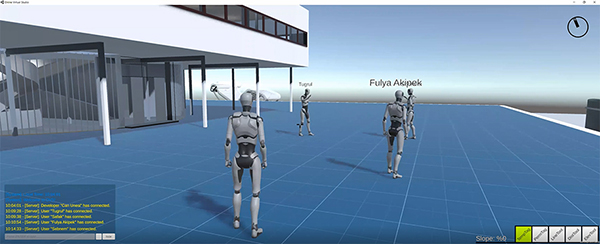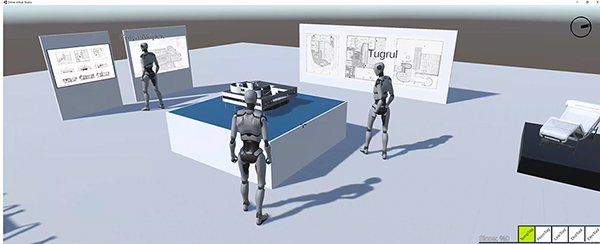Virtual Environments in Design Studios
by Tuğrul Yazar | May 30, 2023 11:17
There are cognitive, technological, and pedagogical ideas and experimental studies on architectural design education in virtual environments. In the existing literature; new software tools were developed, add-ons to existing software were developed, or software prototypes were developed and tested on various platforms such as game engines. In the distance education model, currently, there is no stand-alone software, specifically developed for the needs of architectural design studios. Similarly, there is no generally accepted pedagogical approach in this field yet.

Virtual Environments
This paper, as the first step of an ongoing research project, includes identifying the transformations, challenges, and opportunities caused by the distance education model in architectural design studios. To make these determinations, alongside a literature review, we conducted semi-structured online interviews with studio instructors and students. As a result of these interviews, we aimed to reveal the expected features of a potential virtual studio software specialized for architectural design studios. In the interviews, we used the prototypes of software in development. Oğulcan Üneşi developed these prototypes using the Unity game engine[1]. In these prototypes, the users can connect to a common virtual environment via a server computer, upload their architectural project models, interact with other studio stakeholders (students, executives, jury), and make presentations.

Conclusions
Many features and ideas for this software are still in the testing phase. Preliminary results show that virtual studio environments have the potential that go beyond imitating traditional studios. We presented these potentials together with some basic features of the software. Traditional architectural design studios have qualities that are difficult or impossible to implement with the standard toolkit of any online platform considering the visual and intellectual characteristics of the design, the qualities of the representative environments, and the immediate possibilities of using computational design technologies. Similarly, online design studios also have qualities that are difficult or impossible to implement with face-to-face methods. The virtual environment and distance learning software developed for architectural design studios will also contribute to architectural education.
You can read the rest of the paper here (in Turkish):
- Unity game engine: https://unity.com/pages/unity-pro-buy-now?utm_source=google&utm_medium=cpc&utm_campaign=cc_dd_upr_emea_emea-t1_en_pu_sem-gg_acq_br-pr_2023-01_brand-et1_cc3022_ev-br_id:71700000105990349&utm_content=cc_dd_upr_emea_pu_sem_gg_ev-br_pros_x_npd_cpc_kw_sd_all_x_x_brand_id:58700008262875201&utm_term=unity&&&gclid=CjwKCAjwvdajBhBEEiwAeMh1U578ZXRpxEeu4a6gi9JKMGuwgbCND6aILnLzMudMyZCETWBDfdv32hoCH2oQAvD_BwE&gclsrc=aw.ds
- Download: https://www.designcoding.net/decoder/wp-content/uploads/2023/05/MSTAS2022_Bildiri.pdf
Source URL: https://www.designcoding.net/virtual-environments-in-design-studios/